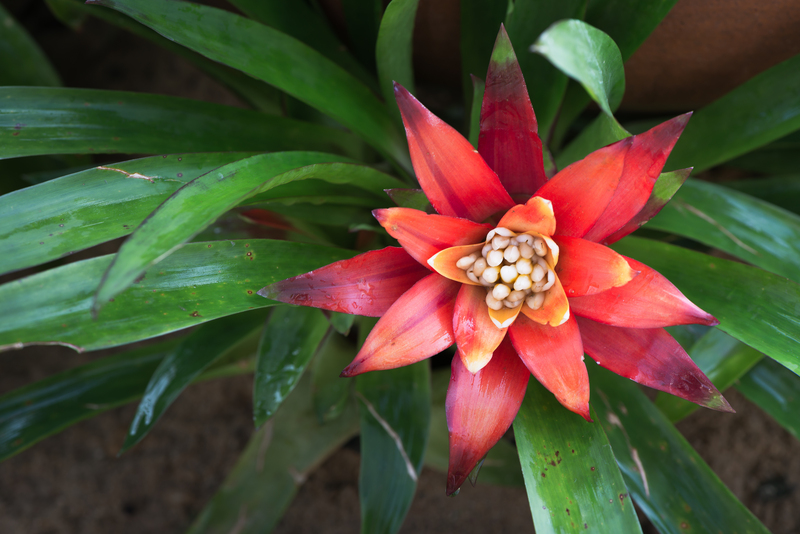Eco-Friendly Gardening: A Strategy to Fight Climate Change
Posted on 04/07/2025
In our fast-changing world, every choice we make matters, especially in our own backyards. Eco-friendly gardening has gained immense popularity as more people realize that sustainable landscaping is more than a trend--it's a powerful strategy to combat climate change. This comprehensive guide explores how you can transform your green space into a climate-resilient garden. Discover practical tips, ecological benefits, and innovative techniques to make your home garden part of the solution.
Understanding Eco-Friendly Gardening
Eco-friendly gardening--also referred to as sustainable gardening or environmentally conscious gardening--means cultivating plants and maintaining outdoor spaces in ways that reduce negative environmental impact. The main aim is to:
- Conserve natural resources
- Protect biodiversity
- Promote soil health
- Reduce greenhouse gas emissions
- Improve carbon sequestration
Gardening with eco-friendly methods not only benefits your immediate environment but also contributes to the global effort against climate change. But what exactly connects gardening and climate action?
How Traditional Gardens Affect the Environment
Conventional gardening practices can unintentionally harm the planet. From overusing chemical fertilizers and pesticides to excessive watering and reliance on fossil-fuel-powered tools, typical home gardens can contribute to:
- Water pollution and waste
- Poor soil health
- Release of harmful emissions
- Loss of local wildlife habitat
- Reduced resilience to climate stressors
Eco-friendly gardens, in contrast, remedy these issues by working with nature, not against it.

Key Benefits of Eco-Gardening in Fighting Climate Change
Integrating eco-friendly gardening strategies into your outdoor spaces delivers significant benefits for both the environment and your community:
- Carbon Sequestration: Healthy gardens store carbon dioxide in plant biomass and soil, helping reduce greenhouse gases.
- Water Conservation: Native plants and efficient watering systems limit water waste during drought.
- Biodiversity Protection: Diverse plantings support pollinators, beneficial insects, and birds.
- Improved Soil Health: Natural compost boosts soil fertility without chemicals.
- Urban Cooling: Trees and shrubs provide shade, lowering local temperatures and energy consumption.
- Resilience to Extreme Weather: Deep-rooted vegetation improves flood absorption and wind resistance.
Eco-Friendly Gardening Techniques to Lower Your Climate Impact
1. Choose Native and Climate-Resilient Plants
Native plants are adapted to the local weather, pests, and soil, meaning they thrive without intensive care. Climate-resilient gardens also withstand drought, extreme heat, and unpredictable weather patterns, providing reliable habitat and reducing your need for water, fertilizer, and supplemental irrigation.
- Research regional native species for your garden zone
- Opt for drought-tolerant or heat-resistant varieties if you live in arid or hot climates
- Incorporate a mix of trees, shrubs, and ground covers to create a sustainable plant community
2. Composting: Turn Waste into Wealth
Composting transforms kitchen scraps and yard waste into nutrient-rich organic matter. Compost improves soil structure, fosters healthy root growth, and reduces the need for synthetic fertilizers--all while keeping organic waste out of landfills, lowering methane emissions.
- Set up a backyard compost bin or vermiculture worm bin
- Add vegetable peels, coffee grounds, eggshells, and grass clippings
- Turn or aerate compost regularly for rapid decomposition
- Use finished compost as a natural fertilizer for garden beds and containers
3. Conserve Water Wisely
Water scarcity is a growing threat worldwide, so water-wise gardening is essential. Reduce your garden's water demand by:
- Installing drip irrigation or soaker hoses to target roots directly
- Collecting rainwater using barrels and diverting it to thirsty plants
- Mulching garden beds to lock in soil moisture and suppress weeds
- Watering early in the morning or late evening to cut evaporation
4. Avoid Harmful Chemicals
Synthetic fertilizers, pesticides, and herbicides can harm beneficial insects and degrade soil health. Embracing organic gardening methods means:
- Using natural pest solutions like neem oil, insecticidal soap, or introducing natural predators (ladybugs, lacewings)
- Applying compost or aged manure in place of chemical fertilizers
- Practicing crop rotation and polyculture to prevent pest outbreaks
5. Encourage Biodiversity
Eco-friendly garden design goes beyond aesthetics. Growing a variety of plants, flowers, and shrubs attracts pollinators, controls pests naturally, and fosters a resilient outdoor ecosystem.
- Plant "pollinator strips" with native wildflowers for bees and butterflies
- Incorporate shrubs and small trees for bird habitat
- Avoid monoculture; mix flowering time and plant height to support wildlife year-round
6. Reduce, Reuse, Recycle in the Garden
Sustainable gardening also means minimizing waste. Make the most of available resources:
- Repurpose containers, old wood, or furniture as planters or raised beds
- Use leaves and twigs as mulch instead of bagging them for disposal
- Buy tools and supplies made from recycled or sustainable materials
Designing Your Eco-Friendly, Climate-Smart Garden
Plan with Purpose
Successful climate-resilient gardening starts with a thoughtful plan. Begin by:
- Assessing sunlight, wind, slope, and soil types in your yard
- Identifying areas that naturally collect or shed water
- Creating zones for edibles, native wildflowers, relaxation, and habitat
- Setting goals: Are you aiming for maximum habitat, minimal maintenance, or food production?
Soil Health: The Climate Garden's Foundation
Healthy soil acts as both a carbon sink and a support system for plants.
- Limit tilling to avoid releasing soil carbon
- Add compost, leaf mold, and natural mulches regularly
- Test soil occasionally for pH, fertility, and organic matter
Smart Plant Placement
Group plants by water and sun needs--a concept known as "hydrozoning." This reduces resource use and simplifies care.
- Place thirsty species together for efficient irrigation
- Grow shade plants under tree canopies or on the cooler side of fences
- Leave open ground beneath fruit trees for pollinator-friendly blooms or vegetables
Habitat Features to Nurture Urban Wildlife
Add features like logs, rock piles, and water gardens to give beneficial insects, frogs, and birds shelter and water. Even a small urban plot can support rich biodiversity!
Community and Large-Scale Eco-Gardening for Climate Impact
Community Gardens: Catalysts for Collective Action
When neighborhoods collaborate on community gardens, the positive impact is multiplied. Community gardens:
- Educate participants about sustainable methods
- Provide fresh, low-carbon food locally
- Transform vacant lots into carbon-absorbing green spaces
- Build resilience and social ties, essential for climate adaptation
Urban Greening and Permaculture Projects
City governments and organizations worldwide are turning to urban permaculture and green infrastructure (community forests, rain gardens, green roofs) to:
- Combat urban heat islands
- Reduce stormwater runoff and flooding
- Sequester carbon and purify the air
- Create wildlife corridors and reconnect habitat fragments
Common Mistakes to Avoid
Many well-intentioned gardeners make choices that undermine both their climate goals and garden health. Avoid:
- Overwatering or using potable water unnecessarily
- Bringing in invasive species, which outcompete natives and reduce resilience
- Relying on gas-powered tools--switch to hand or electric alternatives
- Neglecting to mulch, leading to dry, degraded soils
Eco-Friendly Gardening: More Than a Trend--A Movement
Eco-friendly gardening is a proactive way to "think globally, act locally." Every rain barrel installed, tree planted, or bed mulched helps slow climate change and protect future generations.
- Gardeners can inspire neighbors and advocacy in their communities
- Even small gardens matter: a single pollinator plant or compost pile counts
- Children can learn invaluable lessons about stewardship, science, and nurturing life

Frequently Asked Questions
Q: Can gardening really make a difference in the fight against climate change?
Yes! While each garden is small in scale, the collective effect is transformative, especially as green spaces in cities grow. Eco-friendly gardening practices boost carbon storage, save resources, and create climate-resilient neighborhoods.
Q: Is eco-gardening more expensive than traditional gardening?
Not necessarily. While some upfront costs (rain barrels, native tree seedlings) may be involved, sustainable techniques (compost, mulch, native plant seeds) reduce long-term watering, fertilizer, and maintenance costs.
Q: What are easy first steps to start?
Begin by composting, mulching, and replacing thirsty or exotic ornamentals with drought-tolerant natives or edibles.
Conclusion: Cultivating Hope for a Greener Future
By reimagining our home landscapes, schools, and public parks through the lens of eco-friendly gardening as a climate change strategy, we unlock powerful opportunities for environmental repair and resilience. Whether you tend a window box, rooftop, or backyard eden, your choices amplify a message of hope.
Now is the perfect time to join the movement. Start simple. Grow smarter. Share your journey with others.
Together, we can dig in, plant roots, and cultivate a living legacy that restores both planet and people--one garden at a time.

